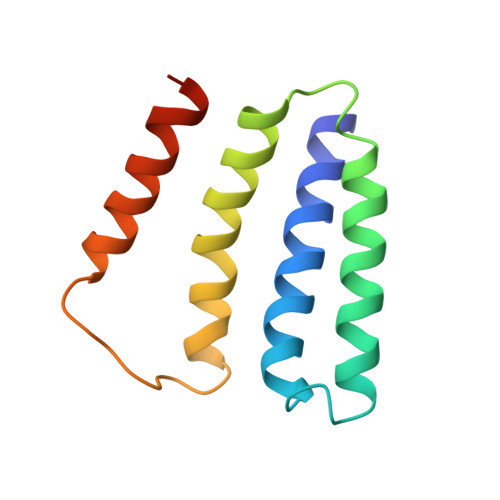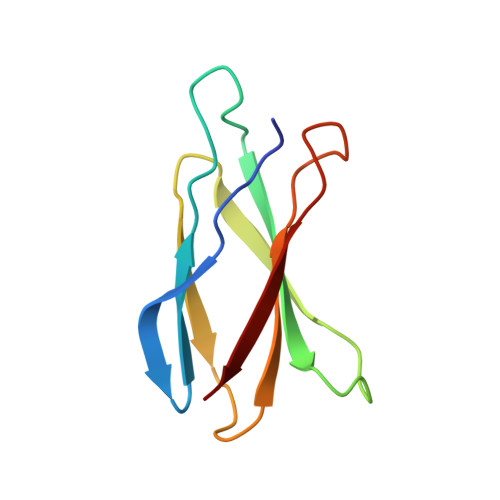Crystal structures of bacterial small multidrug resistance transporter EmrE in complex with structurally diverse substrates.
Kermani, A.A., Burata, O.E., Koff, B.B., Koide, A., Koide, S., Stockbridge, R.B.(2022) Elife 11
- PubMed: 35254261
- DOI: https://doi.org/10.7554/eLife.76766
- Primary Citation of Related Structures:
7MGX, 7MH6, 7SSU, 7SV9, 7SVX, 7SZT, 7T00 - PubMed Abstract:
Proteins from the bacterial small multidrug resistance (SMR) family are proton-coupled exporters of diverse antiseptics and antimicrobials, including polyaromatic cations and quaternary ammonium compounds. The transport mechanism of the Escherichia coli transporter, EmrE, has been studied extensively, but a lack of high-resolution structural information has impeded a structural description of its molecular mechanism. Here, we apply a novel approach, multipurpose crystallization chaperones, to solve several structures of EmrE, including a 2.9 Å structure at low pH without substrate. We report five additional structures in complex with structurally diverse transported substrates, including quaternary phosphonium, quaternary ammonium, and planar polyaromatic compounds. These structures show that binding site tryptophan and glutamate residues adopt different rotamers to conform to disparate structures without requiring major rearrangements of the backbone structure. Structural and functional comparison to Gdx-Clo, an SMR protein that transports a much narrower spectrum of substrates, suggests that in EmrE, a relatively sparse hydrogen bond network among binding site residues permits increased sidechain flexibility.
- Department of Molecular, Cellular, and Developmental Biology, University of Michigan, Ann Arbor, United States.
Organizational Affiliation:


















